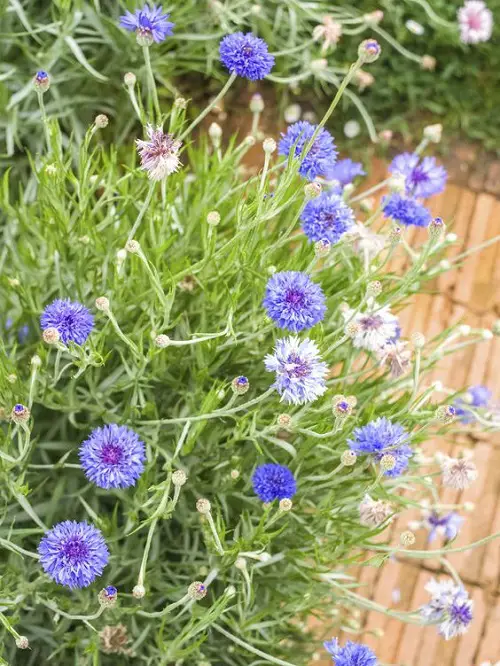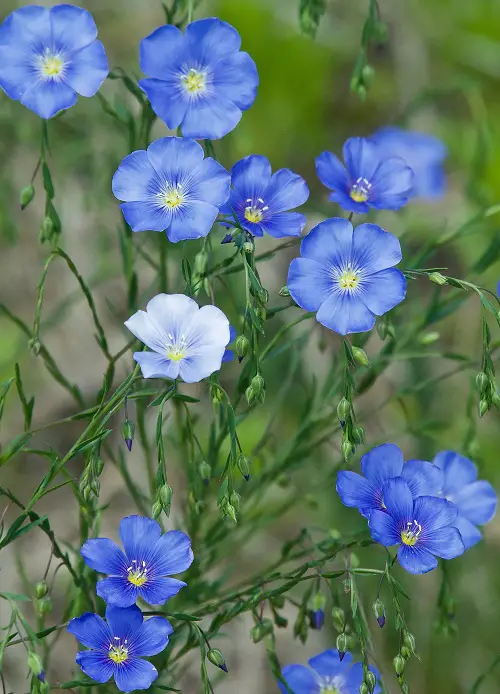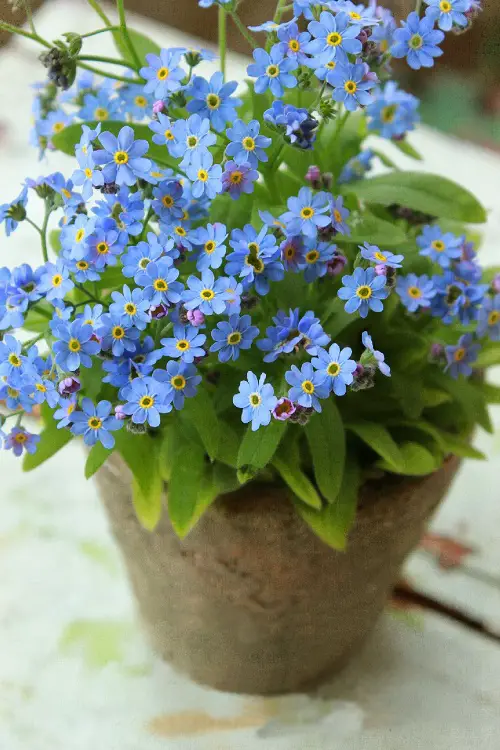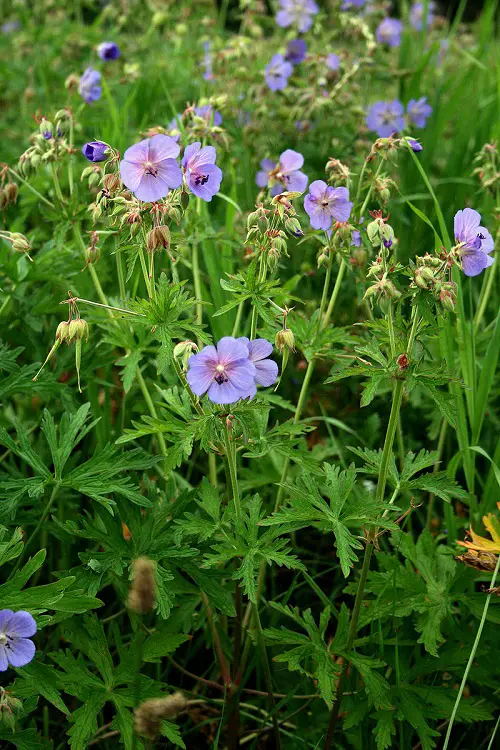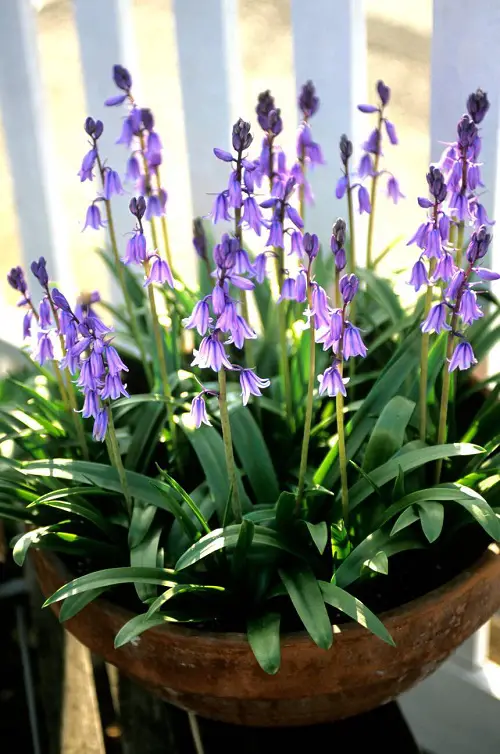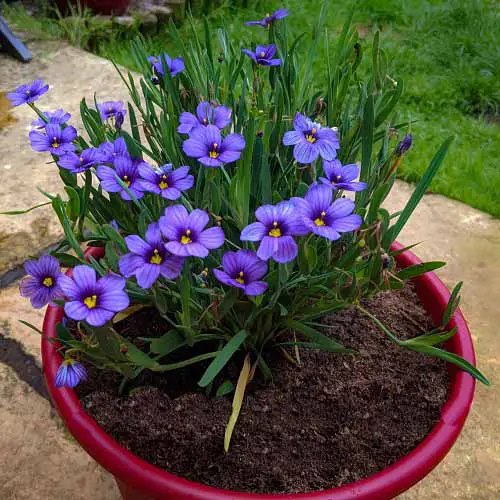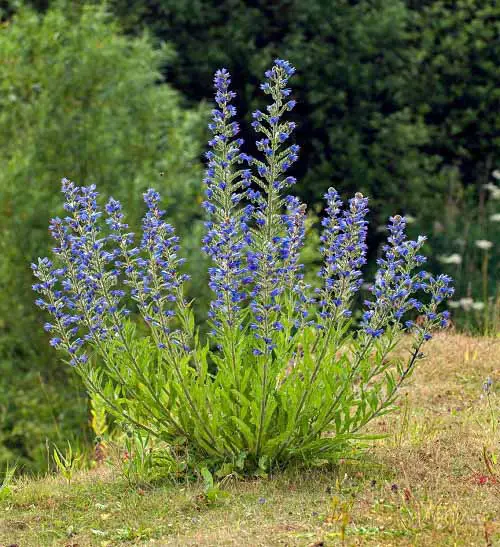These Best Blue Wild Flower Plants are surprisingly beautiful, and they thrive without any fuss. Don’t miss out on them!
If you want blue shades in the garden but don’t have time to grow flowers, these Blue Wild Flower Plants are for you! You can plant these once, and they’ll grow without demanding much.
Best Blue Wild Flower Plants
1. Bluebell
Botanical Name: Hyacinthoides non-scripta
USDA Zones: 4-10
Bluebells are bulbous perennials that produce lovely bell-shaped flowers. These flowers are a rich blue-violet color and bloom in late spring.
2. Bachelor’s Button
Botanical Name: Centaurea cyanus
USDA Zones: 2-11
Bachelor’s Buttons are blue wildflower plants with different shades of blue in the same one. They grow to 3 feet tall and are great for cottage gardens and lawn borders.
3. Blue Flax
Botanical Name: Linum lewisii
USDA Zones: 4-6
The wild Blue Flax flower is native to Eurasia and North Africa but is easily available in the US. Its sky-blue flowers with yellow centers attract bees and butterflies.
4. Lobelia
Botanical Name: Lobelia erinus
USDA Zones: 10-11
You can also go with Lobelias! They’re the perfect choice for hanging baskets, pots, and windows as they have a long blooming season and trailing habit.
5. Forget-Me-Not
Botanical Name: Myosotis sylvatica
USDA Zones: 3-8
Forget-me-not may be small, but this blue wildflower blooms in spring and summer, and caring for it is a piece of cake. Just give it partial shade and water it well.
6. Meadow Cranesbill
Botanical Name: Geranium pratense
USDA Zones: 5-9
Meadow Cranesbill has saucer-shaped pale blue wild flowers. The yellow veins and violet stamens of these flowers add to their beauty.
7. Virginia Bluebell
Botanical Name: Mertensia virginica
USDA Zones: 3-8
Virginia Bluebells bloom in early spring and need a moist, shady area. Give them this, and they’ll reward you with drooping clusters of nice flowers that look like bells.
8. Blue Eyed Grass
Botanical Name: Sisyrinchium
USDA Zones: 6-9
Blue-eyed grass is a perennial with small, star-shaped flowers. The flowers are vivid blue-lavender in color and have yellow centers. It’s common in the open woods of eastern North America.
9. Jacob’s Ladder
Botanical Name: Polemonium
USDA Zones: 3-8
Another gorgeous one among blue wildflower names is Jacob’s Ladder. It needs moist soil to thrive and will reward you with blue-violet blooms.
10. Blue Phacelia
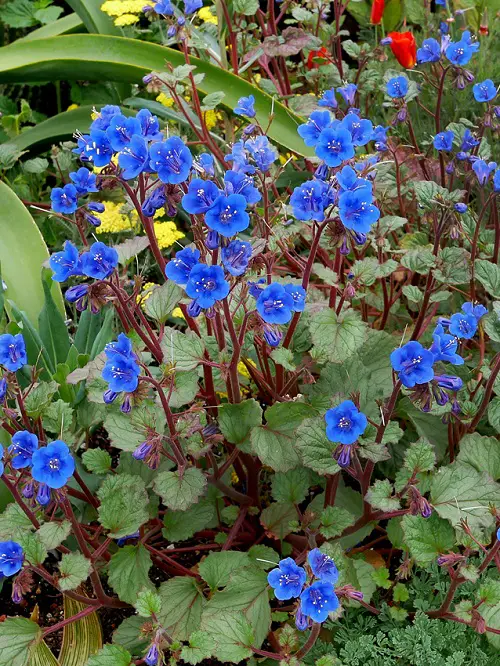
Botanical Name: Phacelia campanularia
USDA Zones: 5-10
Blue Phacelias can be blue or lavender and are so vibrant that they look like they were just painted. It’s a great wildflower that’s used as a cover crop and attracts many pollinators.
11. Blue Viper’s Bugloss
Botanical Name: Echium vulgare
USDA Zones: 3-8
Blue Viper’s Bugloss is known for its tall spikes that are covered in tubular blue flowers. It’s a favorite of bees and butterflies and only needs proper watering to thrive for a long time.
12. Harebell
Botanical Name: Campanula rotundifolia
USDA Zones: 3-7
Harebells have slender stems with blue flowers and are common in woods, meadows, and cliffsides in North America. Did you know that there are over 30 varieties of this plant?
13. Blue Sage
Botanical Name: Salvia azurea
USDA Zones: 4-9
Blue Sage or Prairie Sage also has tall blue flower spikes. This wildflower blooms in late summer and early fall and just needs bright, direct light to flourish.



